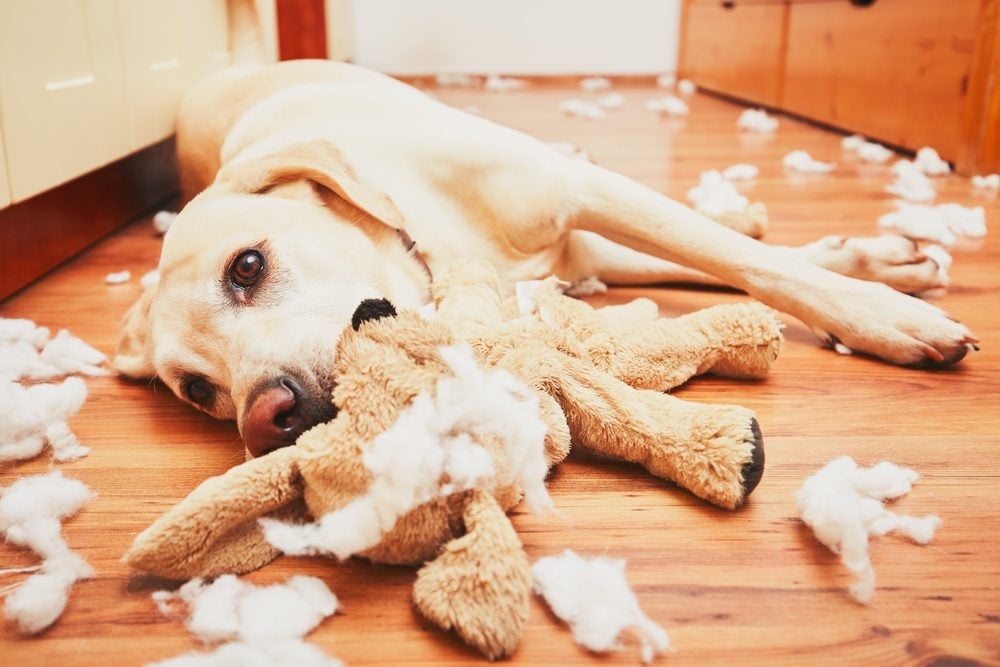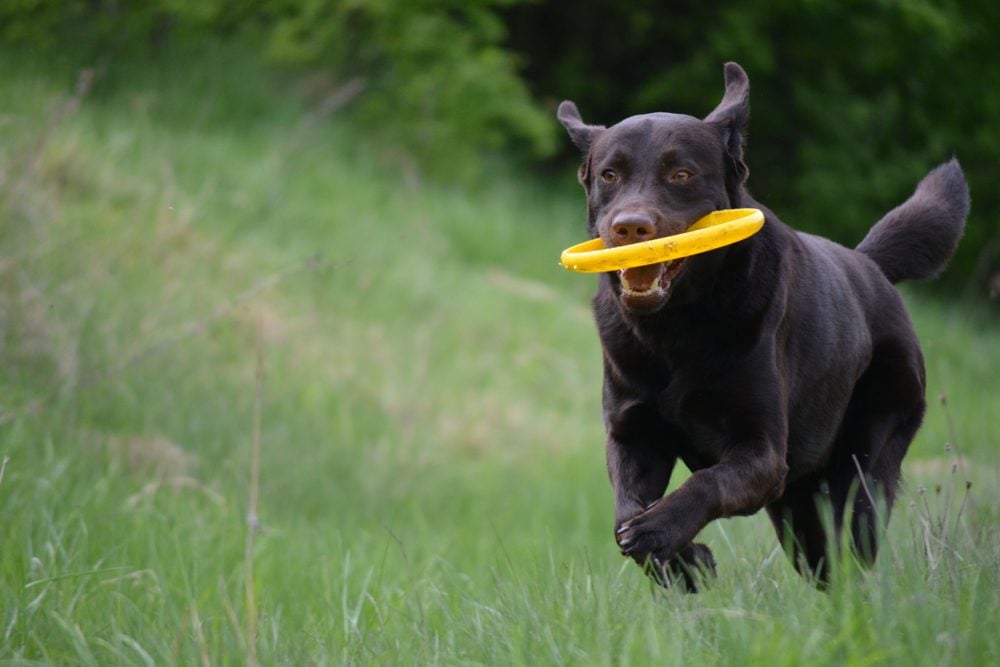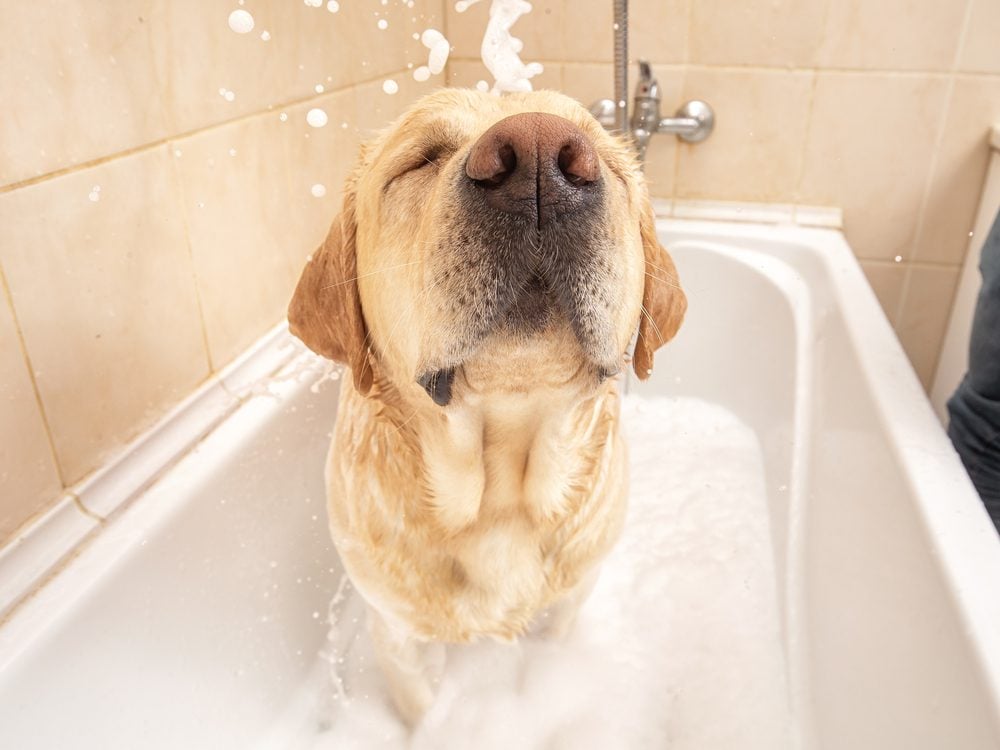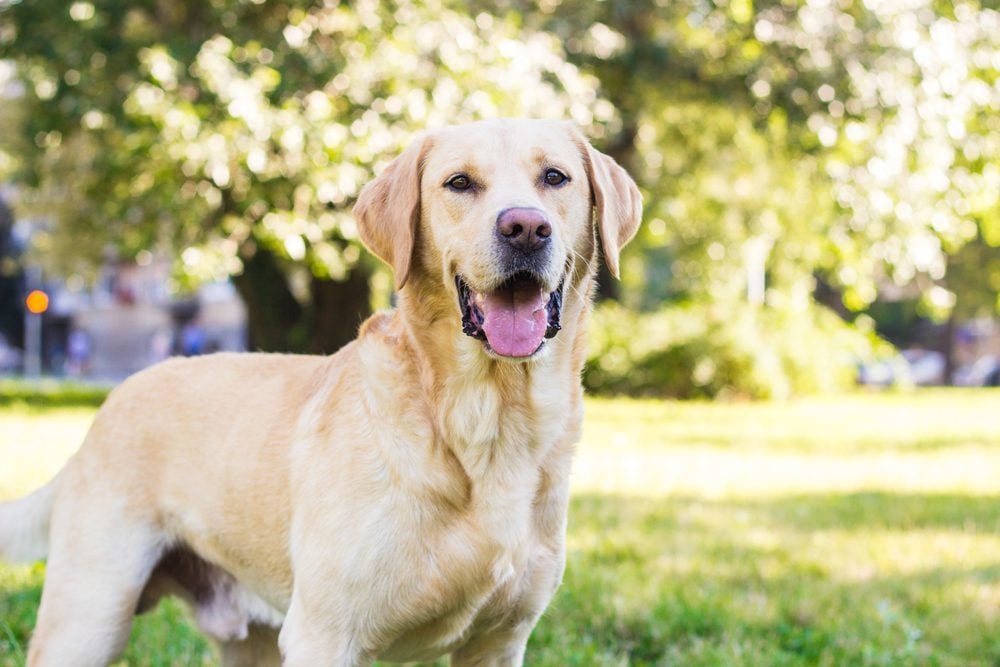Labrador retrievers are a joy to own. They are fantastic family dogs, can be used for hunting, and often have the qualities needed to become service dogs.
Labs tend to get along with other dogs and be friendly toward strangers. Many love to be around people and want to please their owners. This desire to please, along with their intelligence, makes them one of the easier breeds to train.
It is best if you can start training your Labrador while they are still a puppy, especially if the dog is meant to be a service dog. However, adult Labs can still be successfully trained. As eager as Labradors are to learn, they can’t do it all by themselves. They need you to lead them and show them how to behave.
We’ll go over everything you need to know about Labrador training, starting with some facts about the breed. We’ll briefly discuss how dogs learn and communicate, and, of course, we’ll share some of the most important commands you can teach your dog.
Know The Breed
Researching Labradors as a breed will help you better understand what to expect. We’ll share some info about Labradors’ history, temperament, exercise needs, and ability to be trained.
History
The Labrador traces its roots back to Newfoundland. The breed was used by fishermen to retrieve fish that came off the trawl. Later on, the Labrador made its way to England where it was a popular choice of sporting dog.
Part of the reason Labs were used as both fish retrievers and hunting dogs is because they have double-layered, water-resistant coats that allow them to withstand cold temperatures and even icy water.
Temperament
Labradors are some of the friendliest dogs you’ll ever meet. They’re a wonderful choice for families as they tend to do well with kids and love to be part of activities like swimming and hiking. Labs tend to be energetic, happy, and outgoing.
Exercise
Because they are sporting dogs, Labs do need a fair bit of exercise. Luckily, most Labs are obsessed with playing fetch and are naturals at it. This makes exercising them much easier.
Training
Labradors are considered eager to please. They love being around people and receiving attention and praise. Because of this, they tend to be easier to train.
It’s hard to say whether Labs love people or food more; most act like bottomless pits who have never been fed in their lives. This is advantageous for training since they will do anything for a treat.
Don’t Anthropomorphize Your Dog



After reading about Labradors, you’re probably thinking that they seem lovely. They are, of course, but we can’t let our feelings of affection get away from us. Many humans tend to anthropomorphize things, animals being one of the most common.
Anthropomorphizing is when you give a non-human thing (whether it be a living creature or an object) human characteristics that it may not actually have. We do this all the time with dogs.
For instance, a common misconception is that dogs can feel guilt. We see them cowering and believe that they know chewing up our shoes was wrong. However, guilt is a very complex emotion that requires self-reflection.
Dogs are not displaying guilt; instead, they read our body language and cower because, in the past, cowering has worked for them. It either lessens their punishment or eradicates it altogether.
This example is the very reason we need to be careful about treating our dogs like humans. It’s completely fine to love them and spoil them with affection, but sometimes, treating them like humans does them a disservice. It inhibits us from understanding what they’re really trying to tell us.
Communicate Effectively
Anthropomorphizing our dogs can hinder us from effectively communicating with them. Instead, we must remember that our dogs do not communicate the same way we do.
Effective communication requires us to understand how dogs behave and why they behave the way that they do. When we understand this, we can become much better dog trainers. To learn more about how dogs behave and communicate, we recommend reading The Other End of the Leash by famous animal behaviorist Patricia McConnell.
Until then, we’ll share some advice. Dogs are very observant; they’re always watching you and learning. They can learn much through association: you grab the keys, and your dog knows you’re leaving.
This is also why dogs can learn to associate a word with an action they are supposed to perform. However, you need to make it easy for your dog to understand the commands you are trying to teach.
Do so by being clear with the command and only saying the word once. If you keep repeating your command, your dog might learn to sit only after you’ve said the word three times.
Be Consistent
It’s vital to be consistent with your dog’s training. We don’t just mean that you should work with your furbaby often; you need to be consistent with your actions and expectations as well.
Your dog should not be allowed to do something some of the time but not others. For instance, if you don’t want your dog jumping on you while you’re wearing a designer suit, then they shouldn’t be allowed to jump on you while you’re in casual clothes, either.
Being inconsistent sends mixed messages that confuse your dog. This can slow down your dog’s learning and make it difficult for them to pick up the skills you’re trying to teach.
Similarly, everyone in your family needs to be on the same page. You all need to use the same techniques to train your dog, and you all have to agree about what your dog is or isn’t allowed to do. If you’re trying to keep your dog from begging, then no one in the household should be feeding the dog from their plates.
Use Positive Reinforcement
We’ve shared a lot of information to prepare you for training, but how should you train your dog? We recommend using positive reinforcement. This is an approach that rewards your dog for desirable behaviors.
This reward acts as a motivator for your dog. Dogs taught with positive reinforcement learn faster. They want to be rewarded, so they’re pretty enthusiastic and do whatever it takes to earn the reward.
Positive reinforcement can be used to eradicate unwanted behaviors by teaching a dog what they should do instead. For instance, a dog that scratches at the door to go out can be trained to sit in front of the door or ring a bell instead. The unwanted behavior of scratching will be replaced by the desirable behavior.
It is much easier to teach a dog what they should be doing instead of what they shouldn’t. Simply discouraging a behavior through punishment isn’t always effective. Sometimes, the dog will stop doing the unwanted behavior but replace it with a different behavior. In this way, punishment is ineffective; it can also damage your bond with your dog.
Clicker Training
Clicker training is a type of positive reinforcement that tends to be quite effective. The handler will use a tool called a clicker that makes a unique clicking sound. This is paired with a treat so that the dog learns the sound of the click means they will get a reward.
The clicker is then used to mark when a dog has performed a desirable behavior. Timing the click right is key, but most people do not struggle too much with clicker training. Clickers can be used to more accurately mark when the dog has performed the correct action.
Thus, the dog will have a better sense of exactly what you want them to do and can pick up on these skills faster. Clickers are also great for training skills where it is difficult to give a reward exactly at the moment the dog has done the desired action. Your dog will know by the sound of the click that they’ve done right, even if you’re unable to give the reward until some seconds later.
Labrador retrievers are good students, so both basic positive reinforcement methods and clicker training will be well-received by them. Whichever you choose, make sure you also reward your dog for good behavior outside of training sessions. If you catch your dog doing something right, reward them.
The Right Rewards



Speaking of rewards, we need to talk about what makes a good reward and what doesn’t. To understand what makes for a good reward, you need to know what your dog likes best.
Food
The most obvious option is food. The majority of dogs, especially Labs, love receiving food as a reward. However, you still need to do your part to keep your dog interested in what you have to offer.
First of all, you should vary the types of treats you’re using. Don’t just give your dog nothing but Milkbones; mix it up. Speaking of biscuits, they’re not always a high-value treat.
Some treats will have more value to your dog than others. High-value treats are what you want to use in situations where your dog is more likely to be distracted. What is high-value will depend on your pup, but for most dogs, it’s food items like meat, cheese, peanut butter, and freeze-dried fish.
Play
Some dogs aren’t that interested in treats. We’ll be surprised if you adopt a Labrador that isn’t, but just in case, let’s talk about using play as a reward. Since most Labs love to play fetch, throwing a ball can be a great reward.
If your dog seems to be more play or toy-oriented than food-oriented, then you’ll want to factor that into your training. Just as with food, you need to keep your rewards interesting.
We recommend having a couple of toys that are used solely for training. Because your dog has limited access to these toys, they will be a lot more exciting and motivating. Rotate these special toys from time to time so your dog doesn’t get bored with them.
Pets and Praise
Many Labs do love receiving attention and affection. However, this type of reward isn’t always enough on its own. After all, your dog probably gets attention from you pretty often.
On the other hand, it’s important to make sure your touch is actually rewarding. Many dogs don’t like being patted on the head. Would you enjoy someone repeatedly slapping your head? Make sure the way you’re petting your dog is pleasing to them; otherwise, you may inadvertently be punishing your dog when you mean to be praising them.
Three Must-Teach Commands for Labs
So what should you be teaching your dog? There are several skills your dog should learn, but here’s what we think Labs, especially, can benefit from.
Drop It
Have you ever met a dog who loves to play fetch but won’t drop the ball? This is why Labs need to learn to drop it. It’s also useful because they sometimes act like vacuums and pick up things they shouldn’t.
Come
Your furbaby should know how to come when called. This skill can potentially be lifesaving; a dog that stops running after a ball to obey the come command may be prevented from running into a busy road.
Sit
Every dog should know the sit command. It’s often paired with other commands like stay or wait. It’s a a great way to get your dog to give you some space if you’re guilty of allowing them to beg (we’re guilty, too).
Don’t Forget Socialization and Handling



One of the most important facets of dog training is socialization and handling; this is critical while your dog is a puppy, and you need to do the brunt of it within the first three months of your pup’s life. During this time, your puppy is a lot more open-minded and curious.
After this time, your puppy is more likely to respond to strange or unknown stimuli with fear. So, you should introduce your puppy to as many different people, places, and dogs as you safely can.
You’ll also want to work on handling your dog. Your dog needs to learn to be calm when having their feet handled and mouths and ears checked. Any tool you may use on your dog in the future such as nail clippers and grinders, brushes, or shears needs to be introduced positively, a lot of affection or treats. This will make vet visits and grooming easier in the future.
Labs Are Awesome Dogs
Labs are awesome dogs who tend to be friendly and energetic. They’re people pleasers who love affection almost as much as they love food. This breed’s propensity for learning makes them capable of many different roles: companion, service animal, hunter, or search and rescue dog.
When it comes to training, Labs are eager to please, but you must offer proper guidance. Don’t expect your dog to act like a human; this can hinder communication between you and your pup which can, in turn, slow down your dog’s ability to learn from you. Being inconsistent can also slow down your dog’s learning.
Positive reinforcement is one of the best ways to train your dog because it keeps them motivated and excited. Clicker training is an effective type of positive reinforcement that helps your dog understand exactly when they performed the action that will get them a treat. Of course, make sure the treat is something your dog finds rewarding — some dogs prefer to play.
Finally, don’t forget to work on socialization and handling. Without these, your dog can become reactive when encountering new things and is more likely to be a nightmare at the vet. With all of this in mind, you’re going to have a blast with your Labrador.
